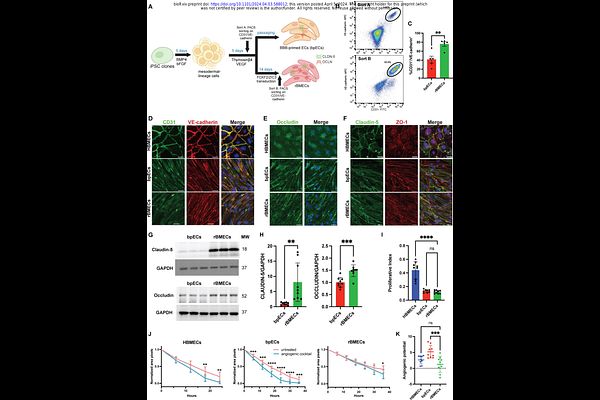Generation of hiPSC-derived brain microvascular endothelial cells using a combination of directed differentiation and transcriptional reprogramming strategies

Generation of hiPSC-derived brain microvascular endothelial cells using a combination of directed differentiation and transcriptional reprogramming strategies
Patel, R.; Cui, A.; Bosco, P.; Ackcan, U.; Richters, E.; Barrilero Delgado, P.; Agalliu, D.; Sproul, A. A.
AbstractThe blood-brain barrier (BBB), formed by specialized brain microvascular endothelial cells (BMECs), regulates brain function in health and disease. In vitro modeling of the human BBB is limited by the lack of robust protocols to generate BMECs from human iPSCs (hiPSCs). Here, we report generation of reprogrammed BMECs (rBMECs) through combining hiPSC differentiation into BBB-primed endothelial cells (bpECs) and reprogramming with two BBB transcription factors, FOXF2 and ZIC3. rBMECs express a subset of the BBB gene repertoire including tight junctions and transporters, exhibit higher paracellular barrier properties, lower caveolar-mediated transcytosis, and equivalent p-glycoprotein activity compared to primary HBMECs, and can be activated by oligomeric A{beta}42. We then generated an hiPSC-derived 3D neurovascular system that incorporates rBMECs, pericytes, and astrocytes using the MIMETAS platform. This novel 3D system closely resembles the in vivo BBB at structural and functional levels and can be used to study pathogenic mechanisms of neurological diseases.